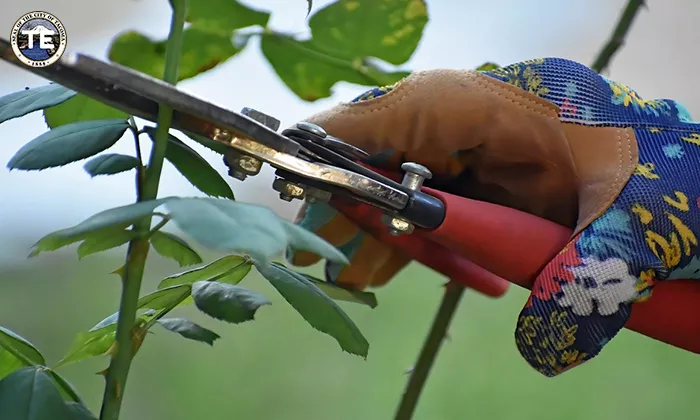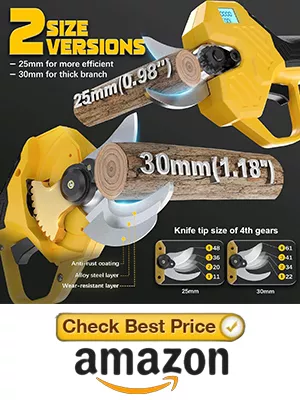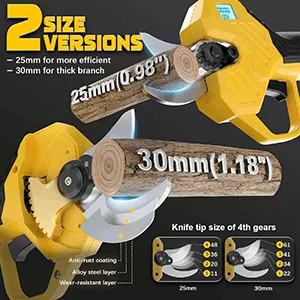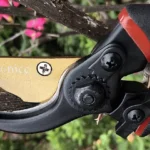In the gardening world, having the proper cutting tools is not just about making your garden look good; it's about promoting healthy plant growth and ensuring efficient maintenance. This guide delves into various gardening shears, scissors, and trimmers, helping you understand their specific uses, differences, and maintenance tips to enhance your gardening experience.
Types of Gardening Cutting Tools and Their Uses
Pruners: Anvil vs. Bypass
Pruners are essential for any gardener and come in two main types: anvil and bypass. Anvil pruners feature a single straight blade that cuts down against a flat anvil. They are ideal for dead wood and dry branches, crushing softer green stems. Bypass pruners have two overlapping curved blades that work like scissors. They are better suited for live plants and green wood, providing a cleaner cut essential for healthy plant recovery.
Understanding Shears: Garden, Hedge, and Edging Shears
Garden shears are robust tools designed for shaping hedges and cutting back perennials. They are larger than typical scissors and designed to handle thicker branches and dense foliage. Hedge shears offer a similar use but are specifically tailored for manicuring hedges. In contrast, edging shears have vertically oriented blades ideal for trimming lawn edges neatly, ensuring precise cuts along walkways and garden beds.

Scissors vs. Shears: Material and Design Considerations
While scissors and shears perform cutting functions, they serve different purposes in gardening. Scissors are smaller and have symmetrical handles, suitable for light cutting, such as opening bags of soil or deadheading flowers. Shears' longer blades and asymmetric handles allow cutting through thicker material, making them indispensable for heavy-duty tasks like pruning thick shrubs.
Specialized Shears: Pinking and Pruning Shears
Pinking shears, primarily used in sewing, feature zigzag blades that create a serrated edge on the fabric to prevent fraying. Similar tools can also be used in gardening to prevent the fraying of thin bark or stems. On the other hand, pruning shears are designed for precise work on plants, allowing for close cuts that promote plant health.
Electronic Options: Hedge Trimmers vs. Shear Shrubbers
Electronic tools such as hedge trimmers and shear shrubbers provide efficient cutting power for more extensive gardens or more frequent maintenance. Hedge trimmers use motorized blades to trim long hedge rows quickly, while shear shrubbers offer more precise control for shaping plants and trimming hedges.
Practical Tips for Selecting the Right Gardening Tool
- Consider the Task: Evaluate the thickness of the material and the precision required. Use pruners for precise cuts on live plants, shears for shaping and controlling larger plants, scissors for light tasks, and fine cutting.
- Ergonomics Matter: Choose tools with handles that fit comfortably in your hand to reduce fatigue and increase control, especially during extended use.
- Maintenance Requirements: Look for tools made from high-quality materials such as carbon steel or stainless steel that are durable and easy to maintain.
Maintaining Your Gardening Tools
Regular maintenance of your gardening tools extends their life and ensures they remain safe and effective. After each use, clean the blades to remove sap and debris, which can cause corrosion. Sharpen the cutting edges regularly to ensure clean cuts, vital for plant health. Lubricate moving parts to prevent rust and ensure smooth operation.
Storage Solutions
Store tools in a dry environment to prevent rust and damage. Hanging them vertically can also help maintain their shape and functionality.
Selecting the right cutting tool for gardening is crucial for effective garden management and plant health. Whether it's delicate snipping with scissors, robust cutting with shears, or the power of electronic trimmers, understanding and choosing the right tool can transform your gardening tasks from a chore into a pleasure. Keep your tools well-maintained; they will serve you faithfully in creating and maintaining a beautiful garden.

Lifelong bacon junkie. Lifelong internet fanatic. Hipster-friendly travel aficionado. Twitter lover. Avid food buff. Incurable travel trailblazer.













